
The unknown has always captivated our imagination, inspiring us to seek answers and uncover mysteries. From the depths of the ocean to the farthest reaches of outer space, the world is full of astonishing discoveries and surprising finds waiting to be uncovered. Throughout history, humans have been making groundbreaking discoveries that have changed the way we think about the world and our place in it. From ancient ruins to modern scientific breakthroughs, these discoveries continue to challenge our understanding of the universe and open new doors to exploration and discovery. Join us as we embark on a journey to explore the most incredible finds in human history and uncover the mysteries of the unknown.
The Annual Redhead Convention in Ireland
Believe it or not but there is an annual redhead convention that takes place in Ireland. The Irish Redhead Convention is held annually in the small coastal town of Crosshaven in County Cork, Ireland. The festival, which was established in 2010, celebrates the unique beauty and diversity of red hair, and it attracts redheads and redhead enthusiasts from all over the world.

The event includes a variety of activities, including a “Ginger Parade,” a “Redhead of the Year” competition, live music, and a “Best Ginger Beard” competition. The festival has become a popular tourist attraction and is considered a fun and lighthearted celebration of a distinctive physical characteristic.
Yongin: The Absolutely Breathtaking Korean Folk Village
The Korean Folk Village, located in Yongin, South Korea, is a living museum showcasing the traditional culture, architecture, and daily life of the Korean people during the Joseon Dynasty. The village covers over 200 acres of land and features hundreds of real houses, workshops, and farming villages, which have been relocated and restored to their original forms.

It was first opened In 1974. Visitors can experience various aspects of Korean life and history, including traditional crafts, agriculture, cuisine, and cultural events, such as weddings, festivals, and ancestral rituals. The village also has several performance stages where visitors can enjoy traditional dances, music, and other performances.
The Japanese Use Daisugi Technique To Make Wood
Yes, the Japanese use a technique called “Daisugi” to cultivate high-quality cedar trees for use in construction and woodworking. The method involves selectively pruning young trees to encourage them to grow straight and tall, with a minimum of branches and knots. This results in long, straight logs that are prized for their beauty and durability.

Daisugi has been used for centuries in Japan and is considered an important aspect of the country’s traditional forest culture. The technique helps to conserve natural forests by allowing for sustainable harvesting of wood, and it also helps to promote healthy tree growth by encouraging the trees to grow tall and strong.
A 200-Year-Old Bridge In Dagestan Russia
When I say Dagestan, the first thing that might come to your mind would be the UFC fighter Khabib Nurmagomedov. However, he is not the only famous thing to come out of the region. The region also has a 200-year-old bridge which was made without any nails. The bridge is known for its historical significance and architectural beauty.

The bridge was built in the early 19th century and is considered one of the oldest bridges in the region. It is made of stone and is supported by arches. The bridge is considered a symbol of the region’s rich cultural heritage and is a popular tourist attraction, attracting visitors from all over the world who come to admire its historical significance.
The 2 Ton Armadillo
Armadillos are fascinating creatures known for their armor-like shell that provides protection from predators. The discovery of a 2-ton armadillo fossil is indeed amazing, as it would provide valuable insights into the evolution of this unique group of animals. It was discovered by an Argentinian farmer along with other giant armadillos.

Overall, the discovery of a 2-ton armadillo fossil is a significant event for the scientific community and a reminder of the natural history that surrounds us. Fossils like this one can help scientists understand the physical characteristics, habitats, and behavior of ancient species, as well as the changes that have occurred over time.
Sakya Monastery Location In Tibet
The Sakya Monastery is one of the largest and most important monasteries of the Sakya school of Tibetan Buddhism and has a rich history dating back to the 11th century. Its artistic architecture makes it one of the most famous religious sites in Tibet.

The Monastery is known for its architectural beauty and its association with the Sakya tradition of Tibetan Buddhism, which has produced many great scholars and practitioners over the centuries. This can also be the reason why there are over 80000 secret manuscripts in the Monastery’s Library.
Emperor Vespasian’s Roman Bathhouse
Emperor Vespasian built a bathhouse in Rome during his reign. This bathhouse was one of the largest and most impressive public bathhouses in ancient Rome and was used for both bathing and socializing. The bathhouse was built near the Colosseum and the Roman Forum and was part of a larger complex of buildings that included a library.

The bathhouse was equipped with a variety of amenities, including hot and cold pools, steam rooms, and changing rooms. It was also adorned with works of art, including frescoes and statues. The bathhouse was a popular gathering place for Romans of all classes and was an important part of daily life in ancient Rome. What’s surprising is that the bathhouse is still functional to this day.
Beautiful Greek Mosaics Discovered In Turkey
Professor Kutalmış Görkay of the University of Ankara, Turkey, led a team of archaeologists in the excavation of the ancient city of Zeugma in southern Turkey. During the excavation, they discovered a number of ancient Greek mosaics, including some of the largest and most well-preserved examples of this type of art from the Hellenistic period.

The mosaics were probably created between the 2nd and 3rd centuries and were part of the floor decorations in the homes of wealthy citizens in Zeugma. They feature a wide range of themes, including scenes from Greek mythology, as well as images of animals, plants, and other patterns.
5000 Years Old Crystal Daggers Found In Spain
While excavating a megalithic tomb In Spain, archeologists found a crystal dagger that is said to be 5000 years old. Its age isn’t the only fascinating thing about it. The fact that it was made with crystal rock has baffled many scientists. Carving a crystal knife with the tools available at that time was nearly impossible.

The discovery of these crystal daggers sheds light on the advanced technology and sophisticated cultural practices of the ancient civilizations that inhabited Spain thousands of years ago. It is thought that these crystal daggers were used as ceremonial or religious objects or possibly as weapons.
Wae Rebo In Indonesia Is The Oldest Isolated Village In The World
Wae Rebo is an isolated mountain village located in the central highlands of Flores, an island in Eastern Indonesia. It is known for its traditional Manggaraian houses, which are constructed in a unique architectural style that is unlike any other in the world. The houses are tall, cone-shaped structures made of bamboo and thatched with palm leaves.

These houses are arranged in a circular pattern around a central communal area. Wae Rebo has been inhabited by the Manggaraian people for centuries. It is considered a cultural treasure, and its traditional way of life and unique architectural style has made it a popular tourist destination in recent years.
The Vasa Warship
The Vasa warship was a Swedish ship that was built in the early 17th century. It was one of the largest and most heavily armed warships of its time, but it sank on its maiden voyage in 1628 and remained submerged in Stockholm harbor for over 300 years.
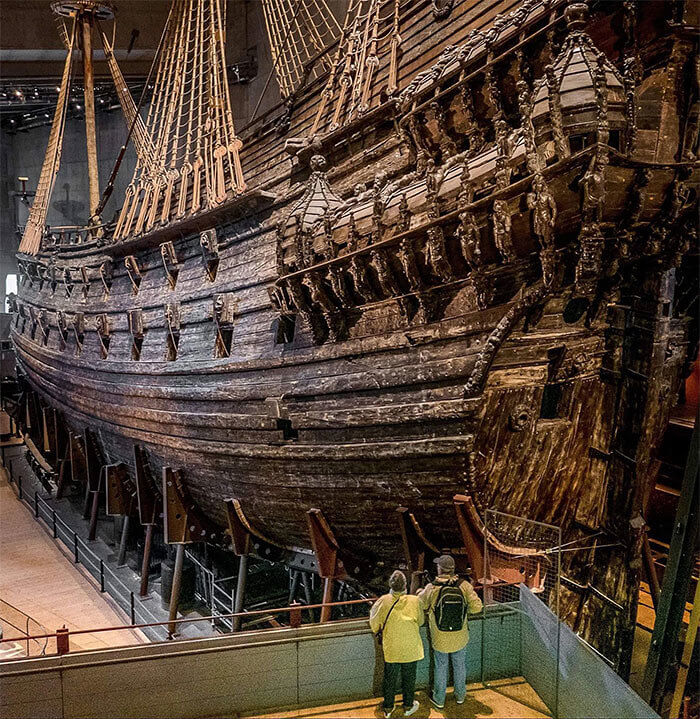
The Vasa is not only an important artifact of maritime history but also a testament to the craftsmanship of the Swedish shipbuilders who created it. It is an impressive example of the naval might of Sweden during the early modern period, and its survival against the odds has made it an enduring symbol of Sweden’s maritime heritage.
World’s Most Colorful Cemetery In Taiwan
Taiwan is known for many amazing things, one of which is this colorful cemetery. As you can see from the picture, it seems very colorful, bright, and beautiful. However, if you are ever visiting the place, then make sure to be respectful and don’t forget that it is actually a cemetery.
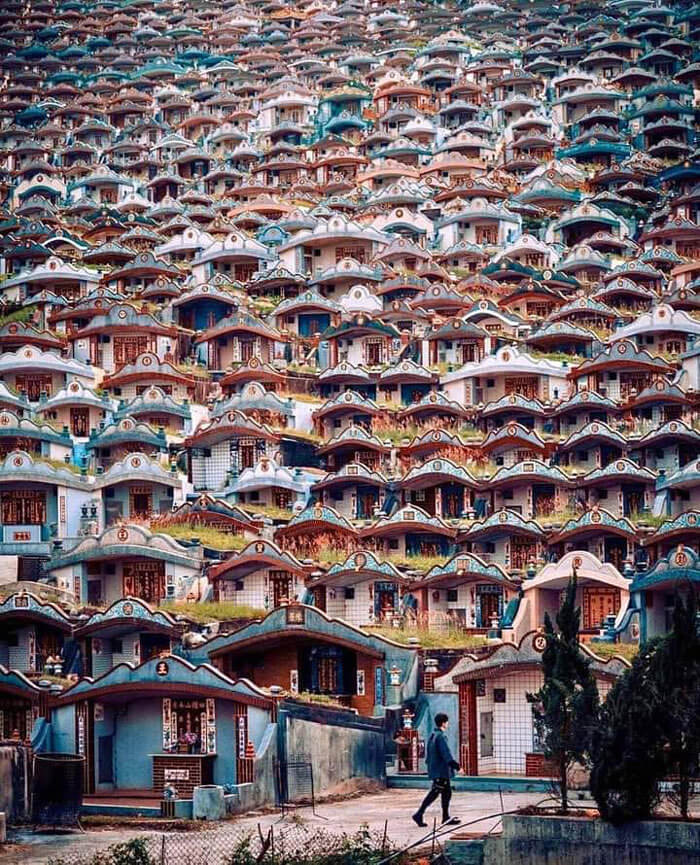
It seems like each person is buried in their own small colorful house in the cemetery. I am not exactly sure about the reason, but I think that it is just to symbolize life after death. The locals surely believe that it is good for the people who have passed away to have a beautiful and colorful afterlife.
Gary Drostle’s 3D Mosaic Design In England
Gary Drostle is a British artist and mosaic designer who is known for his 3D mosaics. He has created many public art installations in England and around the world, including a number of large-scale mosaics that incorporate three-dimensional elements. One of his most notable works is a 3D mosaic of a pond in England.

When you look at it, for a second, you would think that those are real fish. However, they are only part of the mosaic. Gary Drostle’s work is highly regarded for its technical mastery and creative vision. His 3D mosaics are innovative and visually stunning.
150-m Step-Well In India Is The Deepest In The World
Raniji ki Baori is a step-well located in Rajasthan, India. It was built at the end of the 17th century and is considered the world’s deepest step-well. It is approximately 150 meters deep, which would definitely scare someone like me who has a fear of heights.
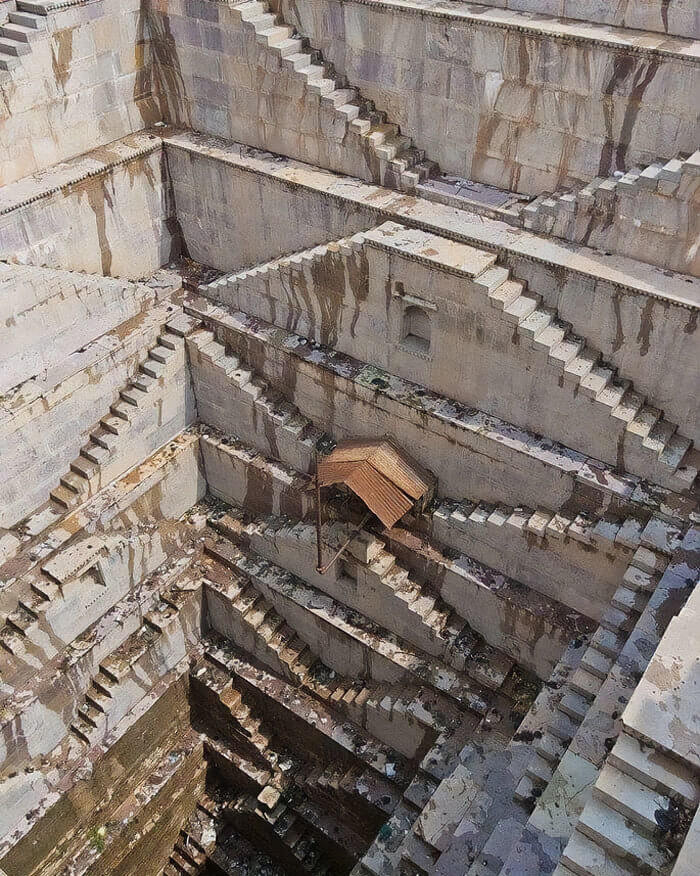
Step-wells were used in ancient India as a means of collecting and storing water, and they served as important social and religious gathering places. Imagine having to go up and down the stairs on this step well. You can still find people using this step-well to this day. Some people also like to swim in it.
Baptism Basin in the Basilica of St. Vitale, Sbeitla in Tunisia
The Basilica of St. Vitale in Sbeitla, Tunisia, is a well-preserved early Christian church built in the 5th century. It is known for its intricate floor mosaics and well-preserved architectural features, including a baptismal basin. This basin was used for performing baptism, which is considered one of the most important sacraments in the Catholic Church.
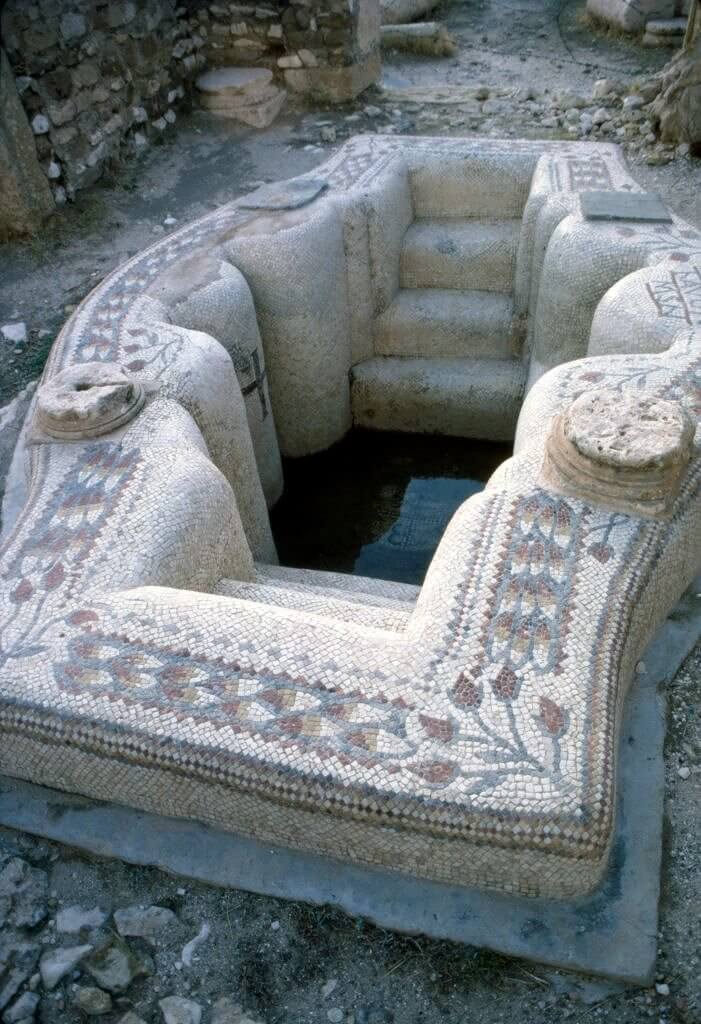
The basin would have been filled with water for the baptismal ceremony, during which the person being baptized would be fully immersed in the water as a symbol of cleansing and renewal. The baptismal basin in the Basilica of St. Vitale in Sbeitla is a testament to early Christian architecture.
A Construction Worker Unexpectedly Uncovered A Roman Mosaic in Croatia
A construction worker in Croatia unexpectedly uncovered a well-preserved Roman mosaic while working on maintaining the pipelines in the street. The mosaic, which dates back to the 2nd century CE, was buried underground for centuries and was considered one of the most significant Roman mosaics ever discovered in Croatia.

After the discovery, the mosaic was carefully removed from the site and transported to a local museum for preservation and study. The discovery of the Roman mosaic in Croatia highlights the importance of preserving and studying the cultural heritage of the region and serves as a reminder of the rich history and cultural heritage of the ancient Roman world.
Column of Marcus Aurelius
The Column of Marcus Aurelius is a Roman triumphal column in Rome, Italy, that was erected in honor of Emperor Marcus Aurelius. It was built around the year 180 AD and still stands at the heart of the Piazza Colonna, one of the city’s main squares. The column is made of marble and stands at a height of around 130 feet.

The column is carved with a spiral relief, depicting the emperor’s military campaigns and victories against the Germanic tribes. The relief spirals upward, telling the story of Marcus Aurelius’ battles, and the column is topped by a statue of the emperor, who was known for his philosophical writings and was considered one of the greatest Emperors of Rome.
The Portuguese Royal Library In Brazil Is Considered The Most Beautiful Library In The World
The Portuguese Royal Library in Rio de Janeiro, Brazil, is considered one of the most beautiful libraries in the world due to its stunning architectural design and rich cultural heritage. The Library was built in the 19th century and served as the main Library of the Portuguese royal family when they lived in Brazil during the colonization period.

The Library is housed in a magnificent Neoclassical building with a grand entrance hall, a spacious reading room, and ornate staircases. The interior of the Library is decorated with elaborate frescoes, ornate moldings, and intricate wood carvings, creating a beautiful and inspiring environment for reading and study. Today, the Library is open to the public.
Rock Caves in Italy For Wine Conservation
These caves, often carved into volcanic rock or tuff stone, provide a cool, stable environment that is ideal for aging wine. The constant temperature and humidity in the caves help preserve the delicate flavors and aromas of the wine, and the natural insulation provided by the rock helps protect the wine from light and vibration.
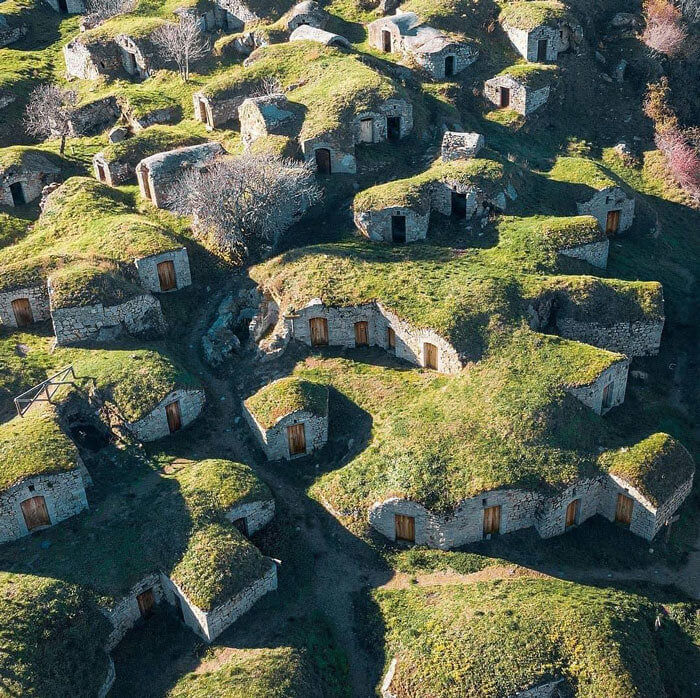
I can’t deny that these caves look like they could perfectly fit in the Lord Of The Rings movie franchise. The moss on the top of the caves makes them look more beautiful. If you are ever in Italy, then you should definitely visit these caves. You can find such caves all over Italy.
Beautiful Medieval House In France From 1509
This beautiful medieval house was built in 1509 and is considered one of the finest examples of Renaissance architecture in France. It is a prime example of the blend of Gothic and Renaissance styles that were popular during the 16th century. The house was rebuilt in 1955 after most of the old buildings were destroyed in World War II.

The house is known for its intricate stone carvings, elegant arches, and beautiful stained glass windows. Its fairytale-like appearance is further enhanced by the lush gardens and courtyards that surround it. Visitors can tour the interior of the house, which has been beautifully restored and is filled with antique furnishings and works of art.
World’s Oldest Carpet
If you are a fan of classic carpet designs, you would love this one. The world’s oldest carpet, known as the Pazyryk rug, was discovered in the Altai Mountains of Russia in the late 1940s. It was found in the tomb of a nomadic Scythian chieftain and is estimated to be around 2,400 years old.

The carpet was well-preserved due to the freezing temperatures of the tomb, which prevented decay and allowed for the preservation of the fibers and dyes. The Pazyryk Carpet is considered one of the most important examples of ancient carpet weaving and is one of the oldest surviving carpets in the world.
Rio De Janeiro’s 200 Years Old Botanical Garden
The Jardim Botânico in Rio de Janeiro, Brazil, is a botanical garden that was established in 1808. It celebrated its 200th anniversary in 2008. The garden is located in the heart of Rio de Janeiro and covers an area of about 350 acres. It is one of the largest and most diverse botanical gardens in the world.

The garden was created with the intention of preserving and studying the diverse flora of Brazil, and it has served as a center of botanical research and education for over two centuries. Visitors to the garden can stroll through the lush vegetation and the tall trees, admire the exotic plants and flowers, and explore the many greenhouses and museums.
The Terracotta Army
When the first Emperor of China passed away in 3rd Century BC; He was buried with an army of thousands of life-sized clay soldiers and horses. The army was discovered in the 1970s by local farmers in Xi’an, China, and is considered one of the greatest archaeological discoveries of the 20th century.
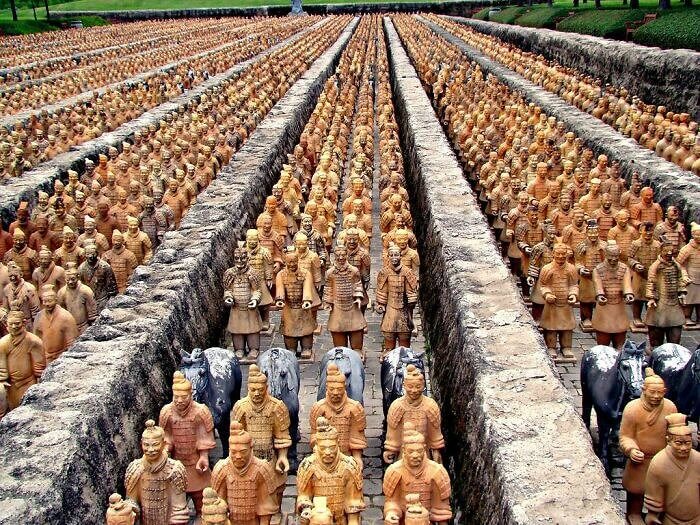
Each soldier in the Terracotta Army is unique, with their own individual facial features, hairstyle, and clothing, and is thought to have been modeled after real soldiers of the time. The army is believed to have been created to protect the emperor in the afterlife and to serve as a symbol of his military power and authority.
Lycian Rock Tombs In Myra Turkey
The Lycian rock tombs in Myra, Turkey, are a fascinating and well-preserved example of ancient Lycian burial architecture. The tombs are carved into the cliffs above the ancient city of Myra and date back to the 4th century BC. They are considered to be some of the best-preserved Lycian rock tombs in the world and are a popular tourist destination in Turkey.

The tombs are built in a variety of styles, from simple niches carved into the rock to elaborate facades with columns and relief sculptures. Some of the tombs are decorated with elaborate carvings. The Lycian rock tombs in Myra are not just interesting from an architectural and historical perspective; they are also visually stunning, set against the backdrop of the rugged cliffs.
Double Helix Staircase Designed By Leonardo Da Vinci
The Château de Chambord is widely considered to be one of the most remarkable examples of French Renaissance architecture. Its double helix staircase, which spirals up inside a cylindrical structure, is one of the most famous features of the castle. The staircase was designed by Leonardo da Vinci himself.
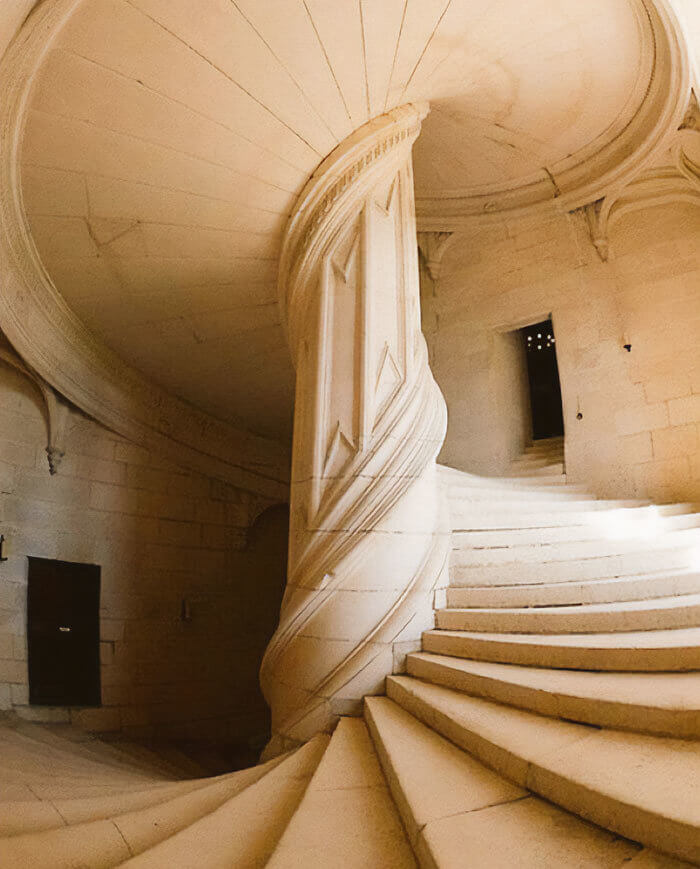
The staircase at Chambord is widely regarded as a masterpiece of Renaissance design, and it remains one of the most iconic features of the castle to this day. The staircase was built in 1516 and is considered a marvelous feat of construction and engineering to this day.
Large Pre-Roman Mosaic in the Palace of Aigai
This large Pre-Roman Mosaic is a significant and well-preserved ancient Greek mosaic that was discovered in the remains of the Palace of Aigai, the first capital of ancient Macedonia. The palace was the residence of the kings of Macedonia, including Philip II, the father of Alexander the Great.

The mosaic was discovered during the excavations of the palace in the early 20th century and is considered one of the most important works of art from ancient Greece. It is a large floor mosaic that covers an area of approximately 30 square meters and depicts an abstract design.
The Beautiful Mysore Palace in India
The Mysore Palace, also known as the Amba Vilas Palace, is a stunning architectural masterpiece located in the city of Mysore in the Indian state of Karnataka. It is one of the largest and grandest palaces in India, and it is a popular tourist destination, attracting millions of visitors each year.
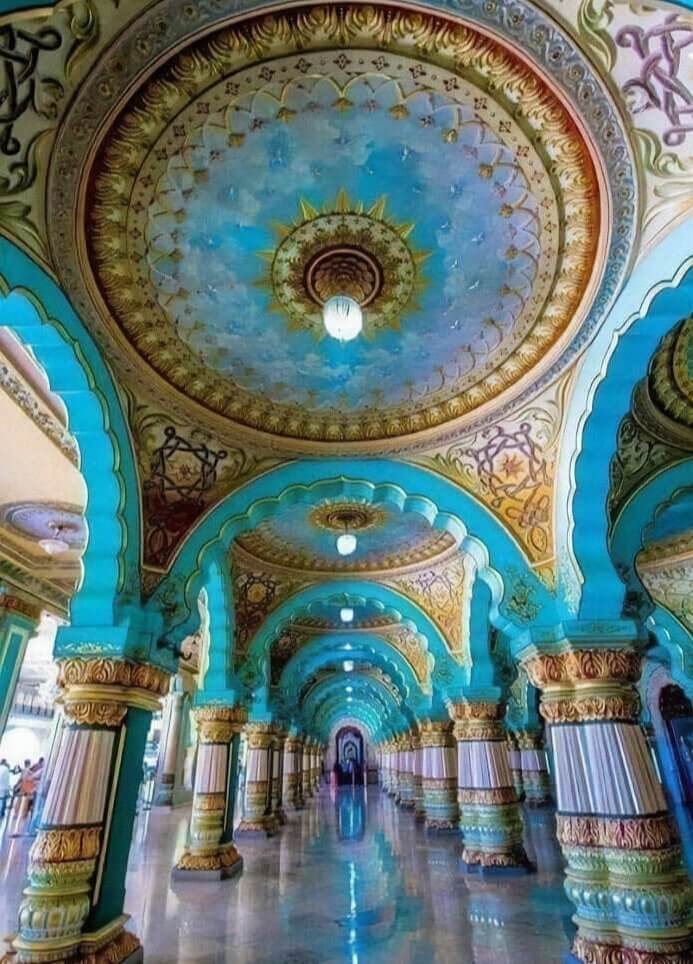
The palace is surrounded by beautifully landscaped gardens and is adorned with intricate carvings, domes, and arches. The interior of the palace is just as impressive, with ornate gold-plated doors, stained glass windows, and magnificent chandeliers. The palace is also home to a number of valuable artifacts and works of art, including paintings, sculptures, and antiques.
Hadrian’s Villa, in Italy
The Medusa sculpture in Hadrian’s Villa is a well-known ancient artifact. It was discovered at the site of Hadrian’s Villa, a sprawling imperial palace located near Tivoli, Italy. The villa was built in the early 2nd century AD and served as a retreat for the emperor and his guests. The villa itself is a UNESCO World Heritage Site.

The Medusa sculpture is thought to have been part of a larger decorative scheme within the villa and was likely used to decorate a pool or fountain. The sculpture depicts the head of Medusa, a legendary figure from Greek mythology who was said to have hair made of snakes and the ability to turn anyone who looked upon her face to stone.
The Sun Temple in Modhera, India
The Sun Temple, located in Modhera, Gujarat, India is a Hindu temple dedicated to the solar deity Surya; it is famous for its intricate carvings that depict scenes from Hindu mythology. The Sun Temple at Modhera is considered one of the finest examples of Hindu architecture from the medieval period and is a popular tourist attraction in India.

The Sun temple was built back in 1026CE. Despite the fact that the temple was partially destroyed in wars, it has been well-preserved and remains a testament to the artistic and architectural skills of the ruling dynasty of that time. It is definitely a work of art.
Ark Of Bukhara In Uzbekistan
The Ark of Bukhara, also known as Bukhara Citadel, is a fortress in the city of Bukhara, Uzbekistan. It is one of the oldest and most famous historical landmarks in Central Asia and has served as the political and religious center of Bukhara for over 1400 years.

The Ark was originally built as a military fortress in the 4th century and was expanded and renovated many times throughout the centuries, with the most recent renovations taking place in the 19th century. It was occupied by residents even as late as the 1920s; however, now the castle has turned into ruins.
A Statue Of King Arthur By Rubin Eynon
The beautiful and unique statue you see in the picture below is called Gallos, which means power. It was crafted by the skilled artist Rubin Eynon. The statue is located in the Cornish Castle in Tintagel, which is a perfect place for a statue of King Arthur.

The statue is almost 8 feet tall and pays tribute to king Arthur who is said to have been born in the castle. The statue is made up of bronze and has a unique design. The backdrop of the Atlantic coast also adds to the beauty of the statue.
700-Year-Old House in Aveyron, France
The 700-year-old house in this picture is a historic and well-preserved medieval building located in Aveyron, France. The house is one of the oldest residential buildings in the country and is considered a remarkable example of medieval architecture. The house was built around the 14th century but has been well-maintained over the centuries.

The building features a combination of wooden and stone walls and exposed wooden beams. One unique thing that you might notice is that the second storey is larger than the ground floor. This was very common for houses at that time, as people only paid taxes on the covered area.
The Druid Temple In Yorkshire England
The ruins of the temple you see below are said to be made in the 1800s. However, it wasn’t a real temple. Researchers think that these are just rocks placed together to make it look like a druid temple when in reality, it served no practical purpose.

The site does look scary. Maybe it’s because of the fog and tall trees in the back. Some people have also linked a few paranormal activities to this site as well. I don’t know the truth, but if I ever decide to visit such a place, I’ll make sure I have my friends with me.
The Real-Life Disney Castle
Hohenzollern Castle is a castle located in the Swabian Alps of central Baden-Württemberg, Germany. The castle sits atop a hill and offers panoramic views of the surrounding countryside. It is one of the most popular tourist destinations in the region, attracting visitors from all over the world.

Hohenzollern Castle has a rich history, with the first fortress on the site being built in the 11th century. Over the centuries, the castle has been expanded and rebuilt several times, with the current structure dating back to the 19th century. The castle features a mix of Gothic, Renaissance, and Baroque architectural styles.
Sainte-Chapelle: The House Of French Kings
Sainte-Chapelle is a stunning example of Gothic architecture and one of the most important historic buildings in Paris, France. Up till the 14th century, French Kings used to reside in this building. So the building isn’t just known for its aesthetics but also for its historical importance.
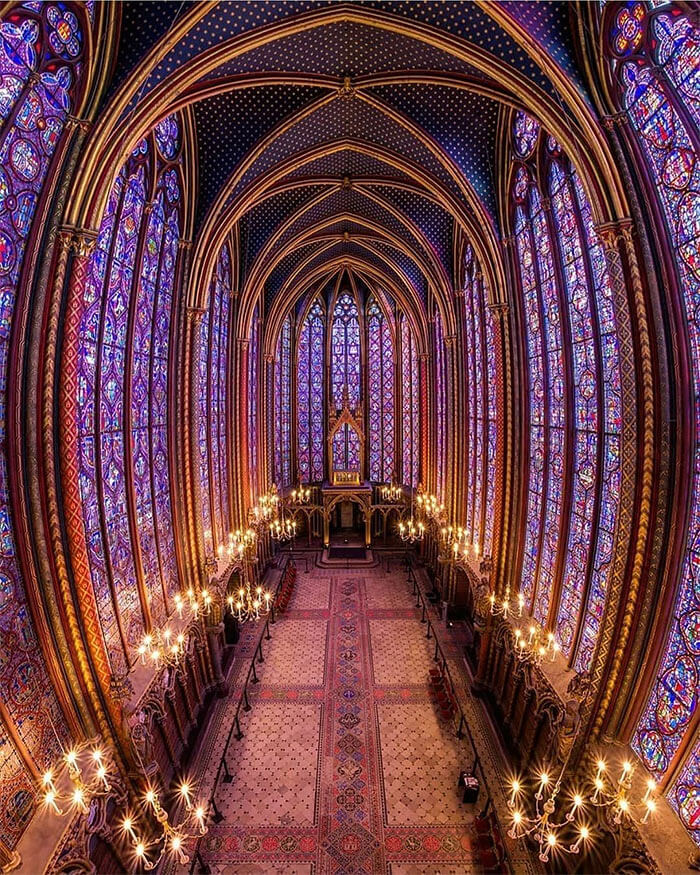
The chapel is known for its breathtaking stained glass windows, which cover nearly the entire surface area of the walls and ceiling. These are considered to be some of the finest examples of medieval stained glass in the world. It is always surprising to see how people could construct such beautiful things at that time without any modern equipment.
The Seven-Headed Snake
The Seven-Headed Snake statue is a famous cultural symbol in Cambodia and is associated with the Hindu and Buddhist beliefs that have been present in the country for centuries. It is believed to represent the seven-headed Nāga serpent, a powerful mythical creature in Hindu and Buddhist mythology that symbolizes protection and good luck.
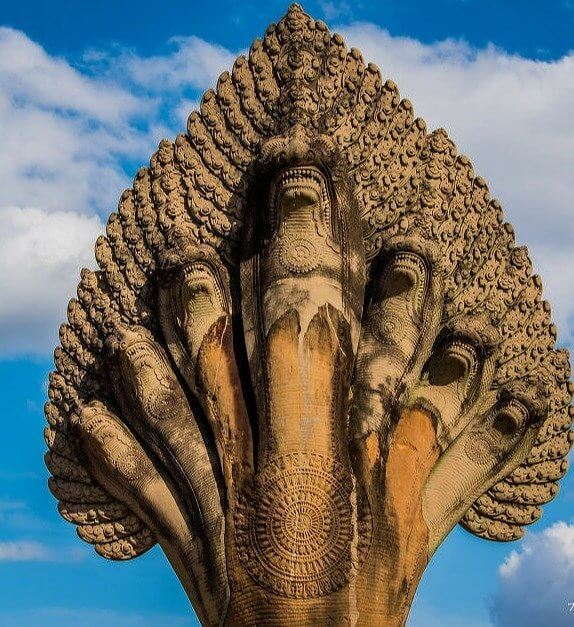
The statue is located in front of Angor Wat. In Cambodia, the seven-headed snake is also considered a symbol of the country’s rich cultural heritage and is used as a representation of the unity and diversity of its people. The statue serves as a reminder of the country’s rich cultural history.
The Hall Of Mirrors in Versailles
The Hall of Mirrors is a famous room located in the Palace of Versailles in France. It was built in the 17th century as part of a series of renovations and expansions to the palace. The room is approximately 73 meters long and 10 meters wide. You can even find some arched mirrors in the hall as well.
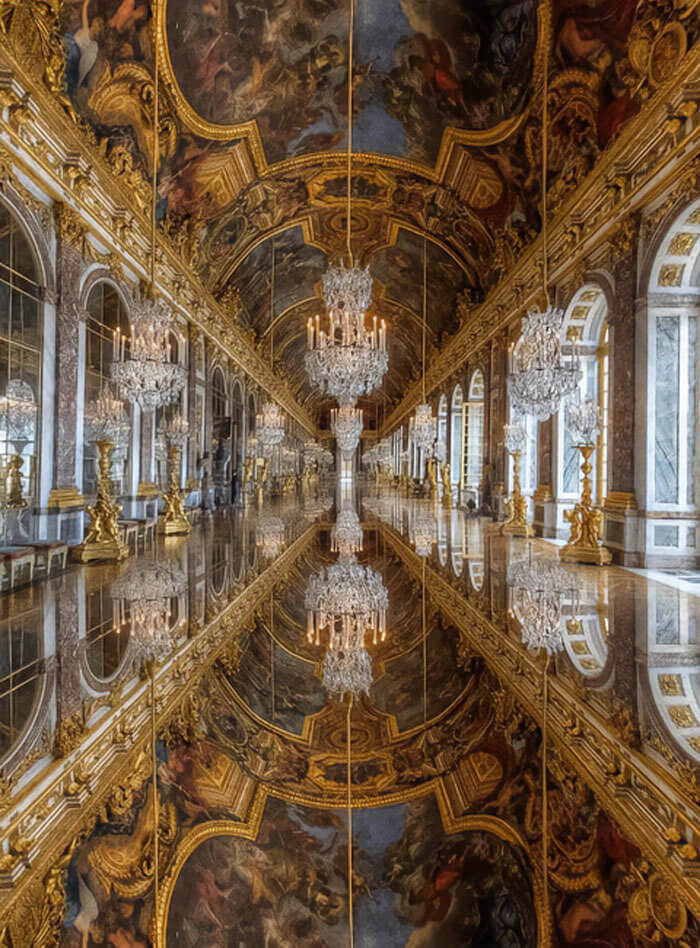
The Hall was designed to be a symbol of the grandeur and wealth of the French monarchy, and it was used as a setting for various state ceremonies, such as the signing of the Treaty of Versailles in 1919, which ended World War I. The room is also famous for its ornate décor, which includes gilded moldings, marble flooring, and chandeliers.
The Rock House In Portugal
Casa do Penedo is a unique house located in Portugal. It is known for its unique rock formations that serve as the house’s walls and support. The house is made of four large boulders stacked upon one another and is said to be one of the most unusual and distinctive houses in the world.

It is situated in the Fafe Mountains in northern Portugal and was built in 1972. Despite its unusual appearance, Casa do Penedo has most of the amenities of a modern home. It was used as a holiday home for many years, but now it is one of the most popular tourist attractions in Portugal.
A Packhorse Bridge In Lancashire
A packhorse bridge is a type of bridge that was commonly used in rural areas, particularly in England and Wales, during the Middle Ages and into the modern era. These bridges were designed to be narrow and strong enough to support the weight of packhorses and their loads, which were often heavy and bulky goods such as grain, wool, or timber.
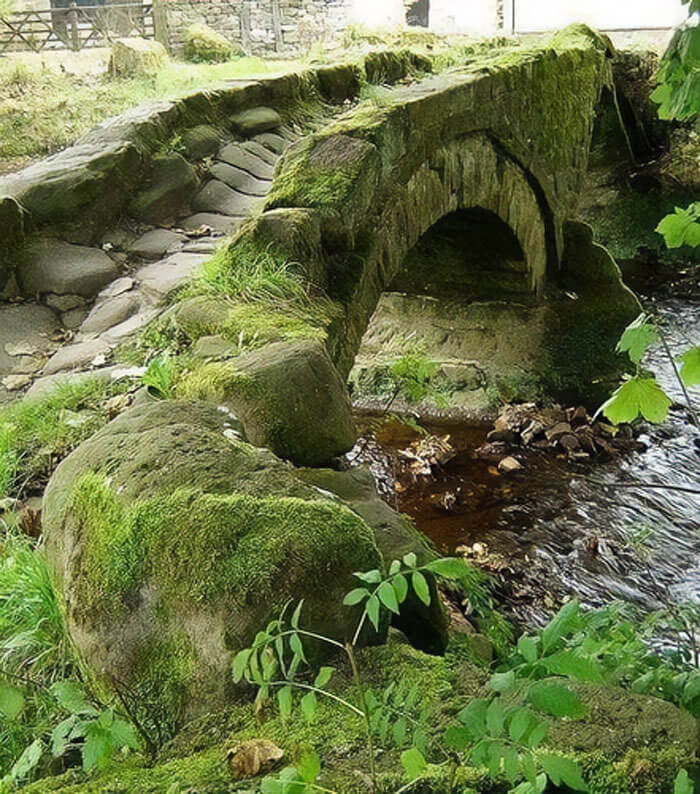
Many of these bridges have now been replaced by more modern structures, but some (like the one you see in the picture above) still remain. This part of England was bombed heavily in the second world war. So it is amazing to see this bridge still intact and still stable enough to withstand a reasonable amount of weight.
The Arch In Normandy
This amazing arch that you see in the photo below is located in Rouen, Normandy. The arch has two angels holding the Rouen coat of arms, along with other beautiful and unique designs. It is one of the best examples of arch designs in the world.

It is not uncommon to see different designs on arches built in the last millennium, but the amount of detail you see in this arch just makes you think about how it was created. You have to be really skillful to craft something like this without using any tools that are available to modern-day artists and construction workers.
